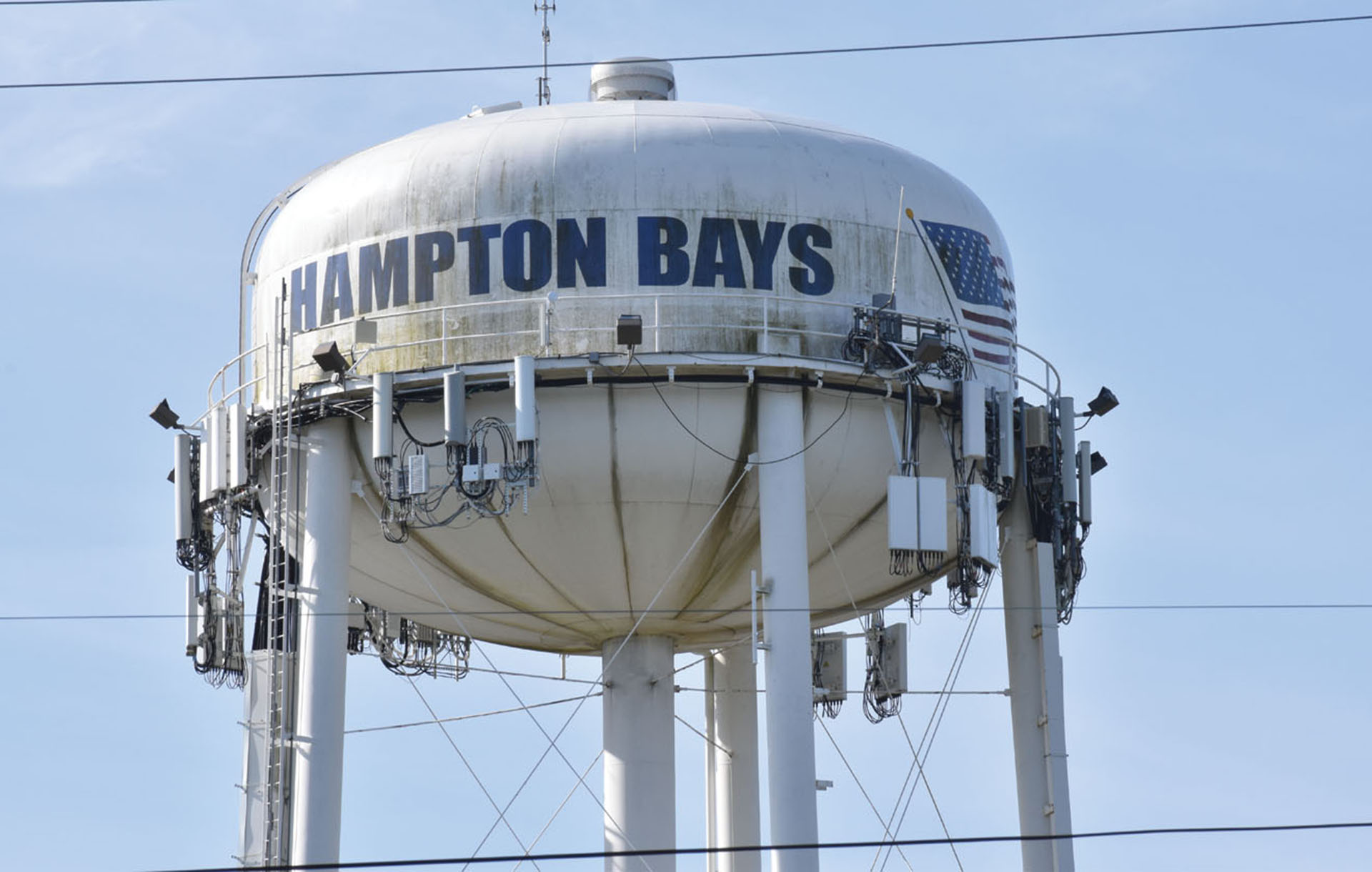Underwater Main Needs Replacing, PFAS Spike

Hampton Bays Water District members will need to foot the bill for additional undertakings should the Southampton Town Board approve putting plans to replace a cracked pipe under Shinnecock Bay out to bid.
Town comptroller Len Marchese said taxes would increase another 20 percent. The water district customers just saw a 20 percent hike to cover the costs of the filtration system and tank lamination.
“It’s a major capital project,” Supervisor Jay Schneiderman said. “We talked about creating redundancy under Shinnecock Canal so the area east of the canal would have better water pressure, and doing the two at the same time.”
The board, acting as commissioners, met virtually with Hampton Bays Water District Superintendent Richard McCuen and Assistant Superintendent James Kappers May 14 to assess upcoming needs.
Suffolk County Department of Health Services, under directive from the state, sent a letter to the town declaring the pipe needs to be fixed or replaced by March of 2022, and fines from $7000 to $20,000 would be issued each day thereafter the district is not in compliance.
A $6.355 million bond was approved in February for two other urgently-needed projects — an iron and manganese filtration system at Wellfield 4, and the rehabilitation of the Bellows Road elevated storage tank.
This Shinnecock Bay pipe has already cracked twice, so Schneiderman reasoned replacing it would be the wisest decision. H2M Architects + Engineers Department Manager of Water Resources John Collins agreed. The town would need to put the project out to bid and begin designs soon to meet the 2022 deadline. Collins said time will be needed to get the Department of Environmental Conservation waterways, coastlines, and wetlands permit and approval from the Army Corps of Engineers to work under the bay and the canal. The town’s conservation board would also need to review plans.
“We have to move forward on this,” Councilman Tommy John Schiavoni said. “It’s affecting the second largest fishing fleet in the state of New York. That part of Hampton Bays is critical to the local economy.”
His comments came after Schneiderman brought up the years-long debate over relinquishing management control to the Suffolk County Water Authority. The town is unsure if the previous offer to have its entire customer base cover project costs is still valid. A new capital project would cost district members another $4.6 million.
“I have a fiduciary responsibility,” Schneiderman said regarding the possibility of a public vote. “It’s a lot of money for a small water district to absorb, but we need to do this one way or the other.”
The commissioners, following board members’ comments, are likely to at least give the green light to put plans out to bid at the last meeting in May.
“We have to show good faith,” Schneiderman said, hoping putting the project out to bid will give the town some leniency in meeting the deadline.
To compound financial problems, the water district has seen an uptick in the combined perfluorinated compounds perfluorooctanesulfonic acid — PFOS — and perfluorooctanoic acid — PFOA – in Well 1-3. Three years ago, 76 parts per trillion was detected, above the EPA-issued health advisory limit of 70 parts per trillion for long-term exposure, although not detected once the water passes through the granular activated carbon, or GAC filter. The compounds can cause liver, pancreatic, testicular, and mammary gland tumors; kidney damage; and reproductive problems. Although still non-detect through the filter, the elevated levels are burning through the carbon quicker.
The 80,000 pounds of GAC will need to be replaced before next summer, falling almost a year-and-a-half short of its five-year life expectancy. It will cost the district roughly $2 a pound for the new carbon to be delivered, and another 10 to 20 cents per pound to remove and destroy the old carbon. That brings the total cost to over $175,000. Work would need to be done in the offseason, and would take three to four weeks.
Councilman John Bouvier said he wants to see if there’s a source for that kind of spike in the compound levels. The nearby Hampton Bays Fire Department may be it. The firehouse was declared a Superfund site in March of 2019.
“Are any of these recoverable costs?” Schneiderman asked because of that fact, adding he wants to look into turning off that well in the meantime. “We didn’t do this. This was done to us.”
Town attorney Jim Burke said there’s the possibility for reimbursement.
“We do have an action against the manufacturers of the products that produced what we feel distributed these contaminants into the groundwater,” he said. “There’s a potential general class settlement down the road.”
If the companies are found guilty, it will depend on who is left to and how much they could afford to dish out.
To create some temporary relief, one of the biggest water meters in the district, at the Hampton Bays Medical Atrium Laboratory, was replaced.
“This meter wasn’t recording low flow,” Kappers said. “It only starts to record when a certain amount of gallons per minute is going through the meter, so we were losing a lot of capital through that meter.”
He said the district has already seen higher, and accurate consumption rates.
“We should effectively be able to pay for that meter this year with the accurate readings,” he said.
A water meter replacement program is in the works — as many in the district are 30 to 40 years old — for large commercial businesses and an apartment complex, especially. Some homes will also see new meters. Those getting a change-out will be notified of the likely increase in water bills. A well rehabilitation program is also being constructed.



